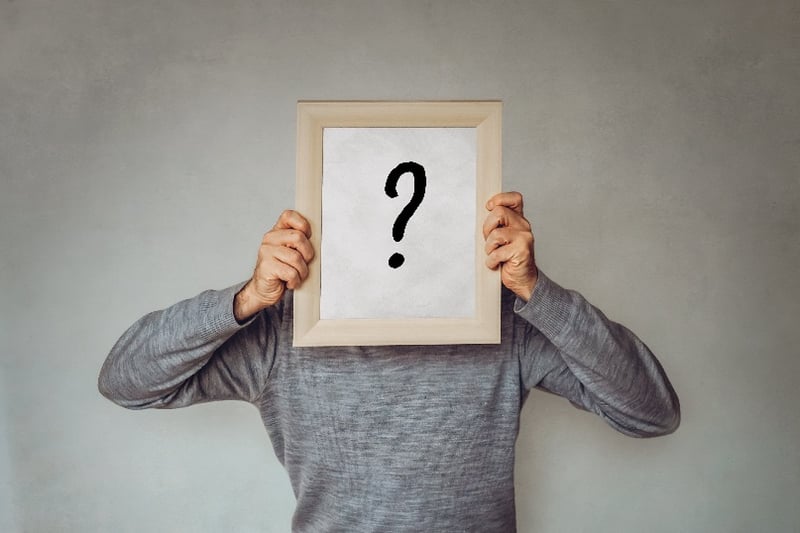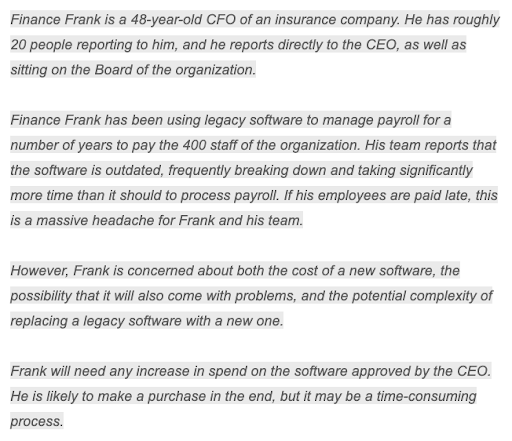
Part 3: The importance of the Buyer Persona in B2B Inbound Marketing
You’ve learned how to collect information for your B2B Buyer persona, but not what information. There are four must-have details to ensure your persona is complete, which are important if you want to execute your Inbound marketing strategy properly.
What is a B2B buyer persona?
Buyer personas are semi-fictional representations of an ideal customer, based on real data and some educated speculation about demographics, behaviours, motivations, and goals. Within a business-to-business context, the buyer persona represents the individual who has the purchasing power for their company.
This, that and everything — Include this critical info
Here are the four must-have details to include when creating a B2B buyer persona:
1. Demographics:
In a B2C context, this would primarily mean looking at the gender, age, location and interests of your ideal customer. In a B2B context, it means focusing on what level they’re at in the organization, how many people report to them, who they report to, what industry they’re in, the budget they’re likely to have available, etc.
2. Challenges and frustrations:
Identifying your ideal customer’s challenges or frustrations will help you map out how your services will help them solve that problem. It's critical to have a good idea of key challenges and build out the message and positioning from there. If you don’t, missing the mark will show your potential customers that you lack understanding — and therefore, might not be the right fit for them.
3. Goals and motivations:
Research the goals and motivations of your ideal customer so that you can align your business, messaging and marketing choices with what they want to achieve. Ask yourself, what does your potential client want to accomplish?
4. Attitudes and buyer behaviour patterns:
Understanding how your potential customers purchase products. How long does it ordinarily take for your ideal client to make a business decision? What is the process they go through? Who have they bought from in the past — and what was their experience? What are their favourite B2B brands?
Don’t forget about the sprinkles!
If you want to go the extra mile, you can always scour the Internet for a picture you deem fits the profile of your ideal persona. Further, you can give them a funky name so that you can always remember them (see examples below). Additionally, if a quote from a client stands out to you after completing customer interviews, don’t hesitate to include it as it helps round out the specifics and really make your B2B buyer persona come to life.
B2B buyer persona examples:
‘Marketing Mary’ - Example from HubSpot
Some MAPs like HubSpot allow you to input your persona straight into the CRM software, which helps you track the purpose of each piece of content against your goals, and to pull reports on how your segmented content is performing.
Here is ‘Marketing Mary’s’ B2B persona example with the required fields:
Role: Director of Marketing
Responsibility: Marketing performance, lead gen, interface with sales, strengthen brand
Goals: Drive leads, measure performance and show ROI
Challenges: Budget, getting buy-in from management, dealing with Sales
Age: 48
Income: $90-$170K
Education: University
Story: Mary is busy but she is interested in professional development, and in trying new things to drive results for her company. She follows her LinkedIn Feed and connections to stay abreast of the latest trends. She knows how to get buy-in internally, but she needs support and backup. Her budgets are likely tight therefore she is looking for an external partner vs. hiring an internal team. She likes to get to the point and values authenticity.
'Finance Frank' — Narrative example
Another way is to write out your persona with a narrative, like the one we have below:

Getting started with B2B buyer personas is not difficult - it just requires some thinking, research, and discussion with Sales colleagues to learn about actual needs and wants. More complex data-driven approaches are possible, but not necessary to begin.
Now that you know what you need for your buyer personas, you can look at mapping out your Buyer's Journey as part of your wider Inbound marketing strategy.
Titan One is a creative and digital agency helping clients across North America drive results.

